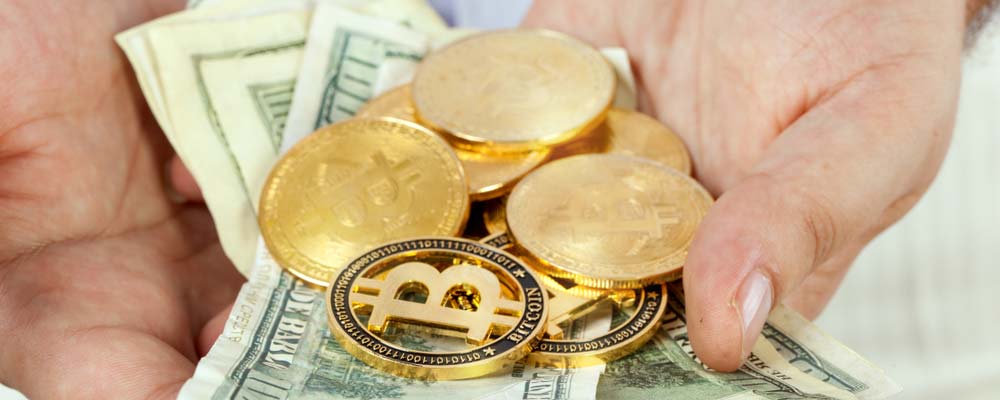“Do you take bitcoin?”
I was at my local pizzeria picking up a few pies. The same family-owned place where I spent half my childhood eating two slices of pepperoni pizza while stuffing quarters into the pinball and Pac-Man machines.
Andy, the owner, looked at me quizzically. “No, but I’ve heard of it.”
I told him about the infamous 2010 bitcoin pizza story, in which an early adopter made one of the first transactions with the digital currency, paying 10,000 bitcoins for two large pies.
Those 10,000 bitcoins are worth $75 million at current prices.
For years, we’ve been hearing that mass adoption is right around the corner. However, the reality is that the number of merchants accepting bitcoin has only increased at a modest 10% annual rate. This is not the exponential growth needed for mass adoption.
Let’s face it: Bitcoin, in its current form, is not capable of fulfilling the role of money. The bitcoin network can only process four to six transactions per second. This is just a fraction of the 2,000 transactions per second processed by the credit card networks.
That means it takes around 10 minutes for most bitcoin transactions to be approved. Sometimes, if the network is jammed, a bitcoin transaction can take an hour. (If you are like me, you feel impatient waiting just 10 seconds for a credit card approval. Forget about 10 minutes!)
Imagine standing at the grocery checkout, arms heavy with bags, waiting for your bitcoin transaction to be approved. This is a dystopian future no one wants.
However, it appears we may have a crypto breakthrough, and it comes from the most unlikely of places.
A patent filed by credit card juggernaut Mastercard could pave the way for expedited bitcoin processing, which would make paying for pizza with bitcoin a reality, sooner than we think.
Expedited Bitcoin Processing
On Tuesday, Mastercard was awarded a patent to manage “fractional reserves of blockchain currency.”
Currently, Mastercard users can only transact with government-issued currency.
However, in Mastercard’s filing with the U.S. Patent and Trademark Office, it cites “increased usage” in blockchain currencies by consumers who “value anonymity and security.”
Mastercard sees a need to improve upon the main disadvantages of cryptocurrency, which includes storage methods and processing capability.
“While blockchain currencies can often provide such safety and security for the payer’s information, such security may be limited for payees, particularly due to the limitations of the blockchain,” the filing said.
In an email to CNBC, Mastercard’s senior vice president for communications wrote:
We’re consistently looking at ways to bring new thinking and new innovations to market to create value for us and our customers and cardholders. Patent applications are part of that process, taking steps to protect the company’s intellectual property, whether or not the idea ever comes to market.
And this is why we can’t yet pay for two slices of pizza with bitcoin. Either the consumer and merchant have to stand around waiting for the digital transaction to process, or the merchant has to rely on the payer’s good faith that it is valid.
Andy, my local pizzeria owner, would probably trust that my payment in bitcoin will eventually process. I’ve been going there for 30 years, and he’s delivered enough pizzas to my house to know where to find me.
However, that wouldn’t work for a consumer and merchant that have no transaction history. And that’s how the credit card networks could quickly verify the funds in your account and settle the payment.
Although the details are still unclear, it appears that consumers would be able to pay for things on their credit card using bitcoin.
Technically Speaking
This breakthrough — coupled with the news that fund giant BlackRock is looking into the cryptocurrency space — has lifted bitcoin to its biggest rally in the past three months.
Prices for the world’s largest cryptocurrency surged over 20% this week from a low of $6,080 to a recent price of $7,450. According to CoinMarketCap.com, the total crypto market cap moved up from $250 billion to $300 billion, as the rise in bitcoin lifted the rest of the space.
Technical analysts see an inverse head-and-shoulders pattern developing, which means bitcoin is starting to see shallower pullbacks and higher rallies. This pattern suggests buyers are returning to the market, and higher prices await in the near future.
Now, maybe Andy will take my bitcoin for a large pepperoni pie.
Regards,

Ian King
Editor, Crypto Profit Trader




